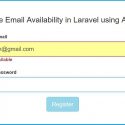How to Setup & Install Laravel 4 on GoDaddy Shared Hosting Live Server | Laravel 4 Shared Host – 03
How to Setup & Install Laravel 4 on GoDaddy Shared Hosting Live Server | Laravel 4 Installation Shared Host
How to Setup & Install Laravel 4 on GoDaddy Shared Hosting Live Server | Laravel 4 Installation Shared Host
——- IGNORE ——-
laravel 4 host, setup laravel godaddy, setup laravel hosting, laravel live server, laravel public_html, install laravel 4, how to setup laravel, laravel 4 on godaddy, laravel shared hosting, laravel production server, deploying laravel, laravel 4 routing, laravel 4 configuration, laravel 4 installation, godaddy laravel, laravel 4, godaddy, shared hosting, live server, laravel 4 host, setup laravel godaddy, setup laravel hosting, laravel live server, laravel public_html, install laravel 4, how to setup laravel, laravel 4 on godaddy, laravel shared hosting, laravel production server, deploying laravel, laravel 4 routing_____________________________________
1) Start by downloading “Bitvise SSH Client (Tunnelier)”.
2) Run the “Bitvise SSH Client Installer”
3) Agree to the license terms!
4) Now click “install”
5) After installation, open the “Bitvise SSH Client”
6) You will need to obtain the following information to connect to your GoDaddy server:
a. Host:
b. Port:
c. Username:
d. Password:
7) Go to your “GoDaddy cPanel”
8) Under the “Security” header, click “SSH/Shell Access”
9) Your IP Address should be automatically inputted. Just click “Submit”
10) Okay the information you need will be found under “SSH Settings” (light grey background)
11) Now input this information into Bitvise!
12) Then click “Login” in Bitvise.
13) If you get a Host Key Verification box pop up, just click “Accept for This Session”
14) If your login is successful, a Bitvise terminal and Bitvise SFTP will open.
15) Under “Local Files”, go to your Laravel project folder stored on your computer.
16) Okay now go back to GoDaddy, and go to your “File Manager”
17) Create a new folder in “home/YOURUSERNAME”, and name it “main-laravel”. – (New Folder will be created in: LEAVE THIS BLANK)
18) Now click “Create New Folder”
19) Now open your “public_html” and create a new folder. Name it “laravel”
20) Okay now go back to Bitvise!
21) Refresh your Remote files.
22) Open “main-laravel”
23) Upload all the folders and files to “main-laravel” expect the “public” folder
24) To do this, highlight everything expect the public folder, and then click “Upload” which has a green arrow pointing up.
25) This will take a lot of time! – Okay it’s done!
26) After the upload is complete, navigate to the “laravel” folder under “public_html”. Open the laravel folder, which should be empty. Now open the “public” folder in the Remote files.
27) Upload all the files and folders in “public” to the “laravel” folder on your remote server. This is quick!
DONE!
28) You can close Bitvise after your uploads are complete.
29) In the cPanel File Manager follow this path: “/home/USERNAME/” “main-laravel” “bootstrap”.
30) Click “paths.php”, and then click “Edit”, and make the following changes:
NOT ALLOWED TO USE BRACKETS ON YOUTUBE, LOOK AT VIDEO FOR CHANGES.
31) Then click “Save Changes”
32) Now in the cPanel File Manager follow this path: “/home/USERNAME” “public_html” “laravel”.
33) Click “index.php”, and then click “Edit”, and make the following changes:
NOT ALLOWED TO USE BRACKETS ON YOUTUBE, LOOK AT VIDEO FOR CHANGES.
34) SAVE CHANGES
35) If you go to “YOUR-WEBSITE.com/laravel” it will show up. You can edit an .htaccess file so you don’t need to type in slash laravel OR you can do a simple re-direct.
36) To do a redirect, go to your cPanel on GoDaddy.
37) Under “domains”, click “redirects”
38) Choose the website you want to redirect, and redirects to “YOUR-WEBSITE.com/laravel”
39) Choose the option “redirect with or without www.”
40) Click “add”
41) Now if you go to your main domain, it will automatically redirect them to the functioning website.
WHA-LA!
source






